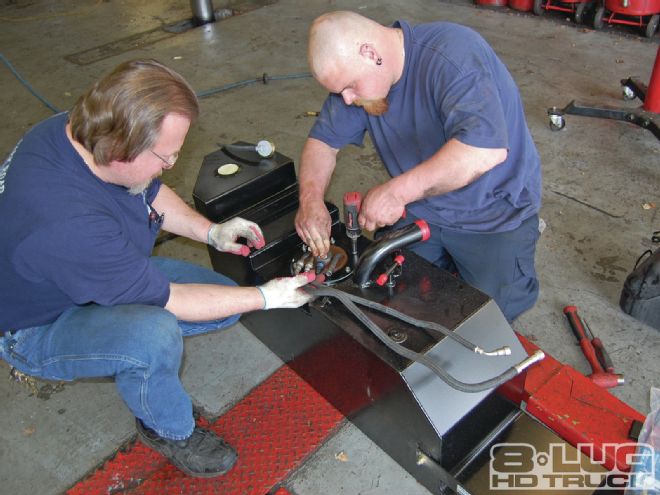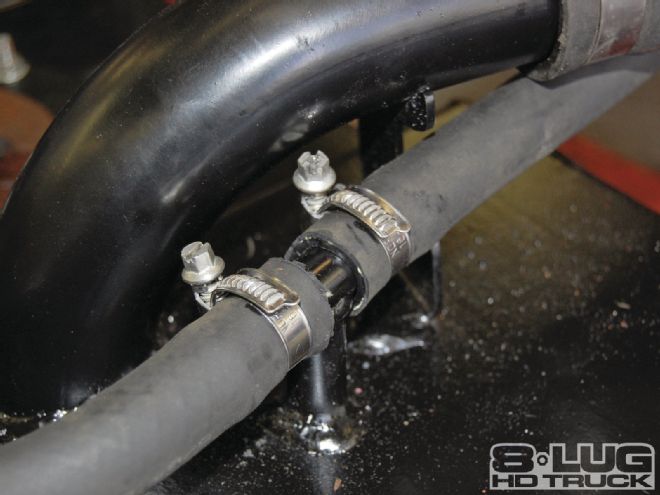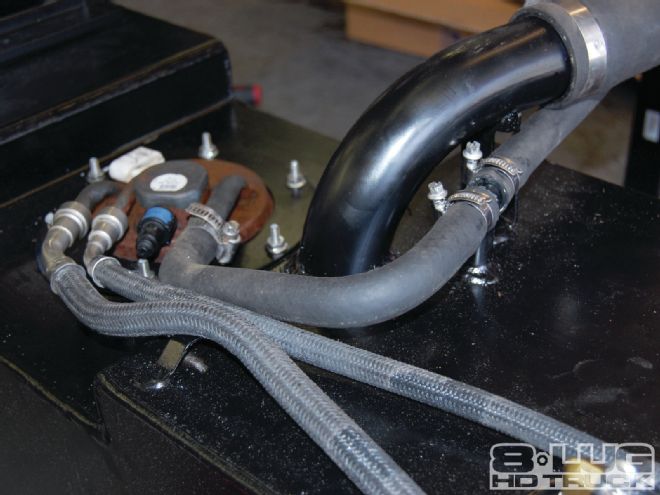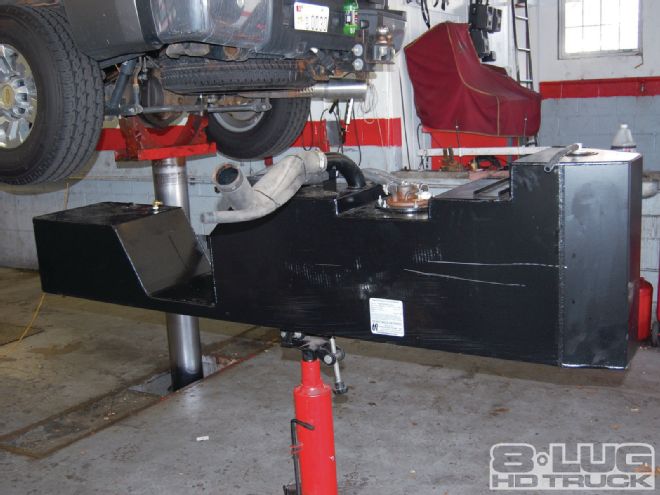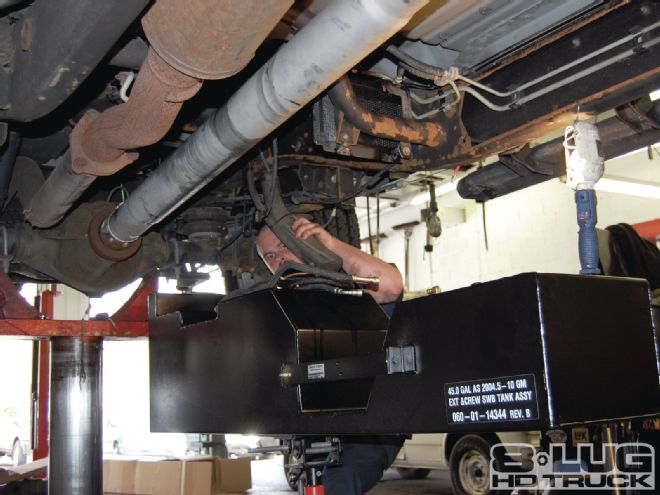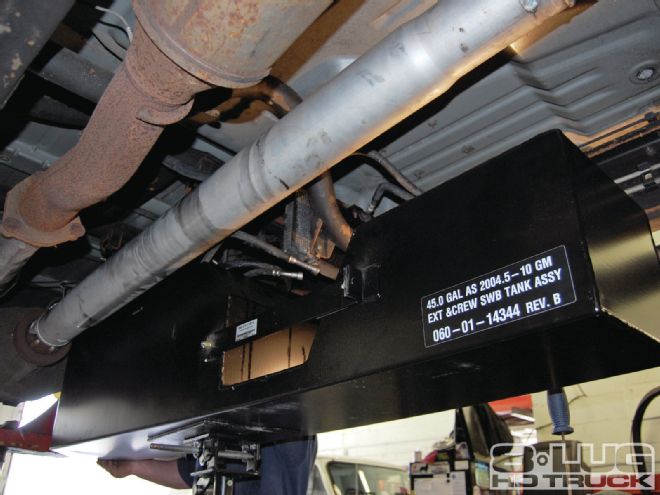Last year, we towed a heavy Weekend Warrior toy hauler to Canada. Part of the trip required us to pull through some mountains, and while our Duramax had plenty of power to keep us well above the posted speed limit, fuel consumption was noticeably—and understandably—up.
What we immediately noticed was we needed to stop for fuel much more often than our traveling companion. True, his trailer was a bit lighter, but our DIC readouts showed very similar mpg. The trucks were similar. Both were LMM Duramaxes with Allison six-speeds and they were within two years of age and comparably equipped. The only obvious difference was his was a longbed (8 foot) and ours was the shortbed (6.6 foot). A quick check showed the longbed’s tank held 34 gallons of ULSD while our shortbed only carried 26 gallons. Wait a minute…26 gallons? Seriously? On an HD truck supposedly designed for towing?

| The correct application is clearly marked on the outside of the box.
“If you’re unsatisfied with the factory fuel supply option, Transfer Flow offers an excellent solution.”
While roaming about the Baltimore Tow Show last year, we came across the Transfer Flow booth and the answer to our problems. We chatted for a while about tanks and trucks, and we left with a lot of info and a business card. After another long trip with a small tank, we made contact with Transfer Flow. A few weeks later, an enormous box appeared. We took the box and the truck over to Park Road Automotive, which is a well-equipped, family run outfit where you can always find a few HD trucks parked out front.

| This label on the tank advises exactly what you are getting.
We found the instructions fairly straightforward. Although you could probably do this on the ground, a lift made the install go much quicker and more smoothly. After draining any remaining fuel, the fill hoses were disconnected. The old tank came out easily enough—the only snag was one of the factory GM fuel line fittings was stubborn. Some surface rust was the culprit. It should be noted that a special tool is required to disconnect both the pressure and return line. Once it was on the ground, we compared the puny plastic GM tank to the brawny, steel, Transfer Flow tank. We wondered if it would fit. A quick look underneath showed it wouldn’t. And here’s why: We had previously installed a Hellwig air suspension (January 2011 issue). It seems the Transfer Flow tank wanted to occupy the same piece of real estate we had picked out for the air compressor and tank that supplies the Hellwig airbags.
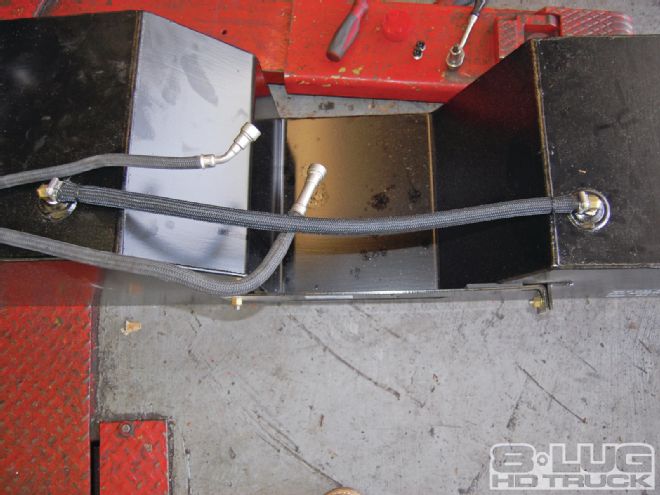
| 10. Here’s a look at the braided hoses that are included for proper venting.
Before going any further, we had to evict the tank and compressor and relocate them to the passenger-side inside framerail. Next, all the hoses and sending unit were swapped out; Tranfer Flow provides new floats for the tank. The new included brackets were hung, the tank was raised up into the truck, and everything snugged up. It should be noted that there was no drilling required and all the factory fuel hoses mated up perfectly. The filler hoses were reconnected, and we poured in a few gallons of diesel we kept from the old tank. We cycled the ignition a few times to ensure the fuel made the trip from the new tank to the Duramax, and it fired right up. After a cursory check for leaks, we left it running and put it back up in the air to check all connections for any drips. We found none. A trip to the local filling station cost us $176. We did learn that the pump clicks off at $75, so we had to keep swiping and starting over, which is annoying. In the future, we’ll prepay at the counter. The fuel gauge worked perfectly, but we did notice the miles-to-empty display on the DIC would not display correctly, and there does not seem to be a fix for it (even with a Tech2) short of an EFI reprogram, so we’re going to look for another solution.
If you’re unsatisfied with the factory fuel supply option, Transfer Flow is the way to go.
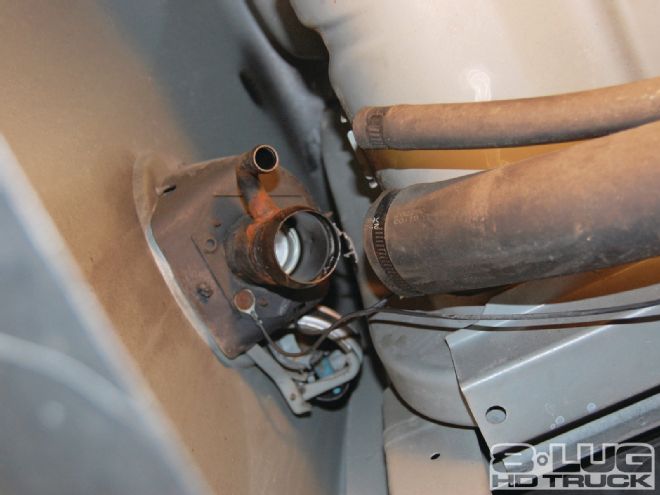
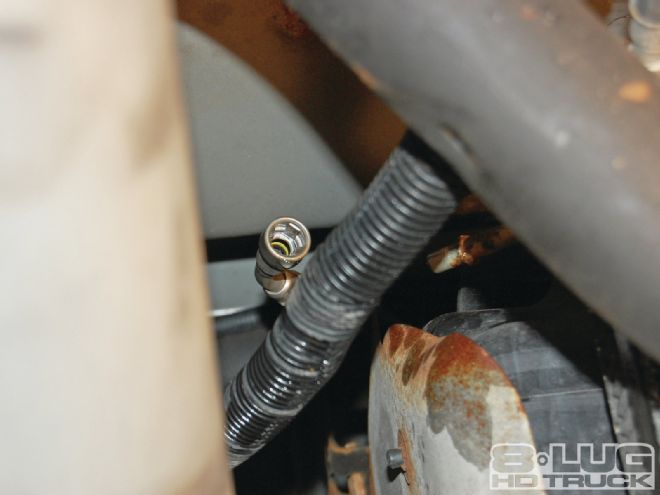
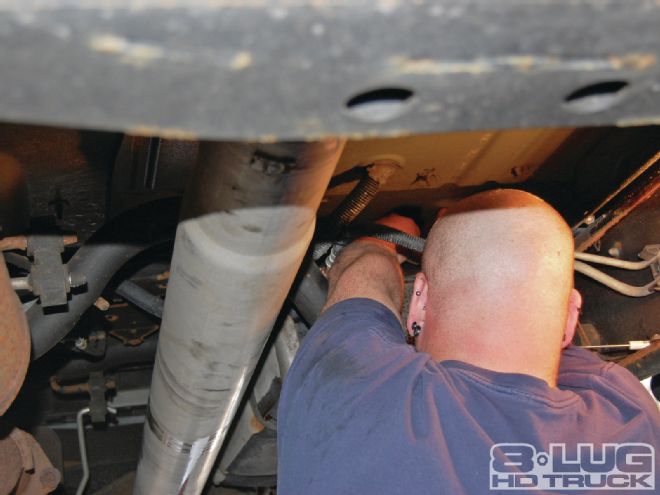
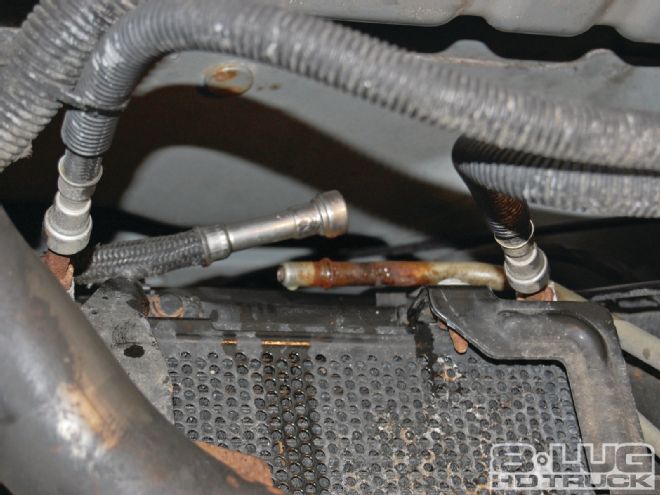
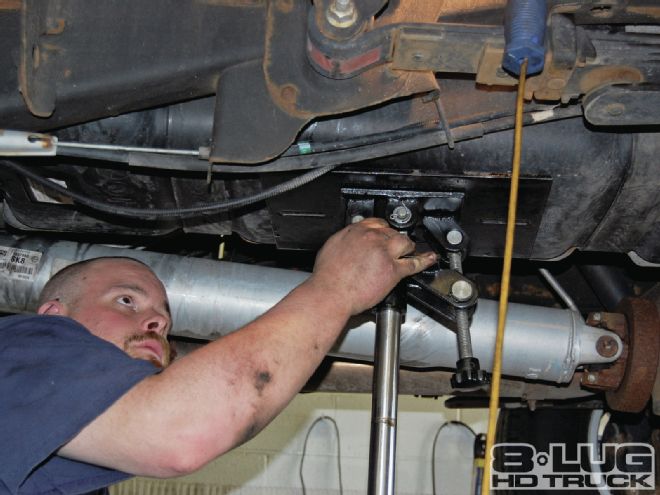
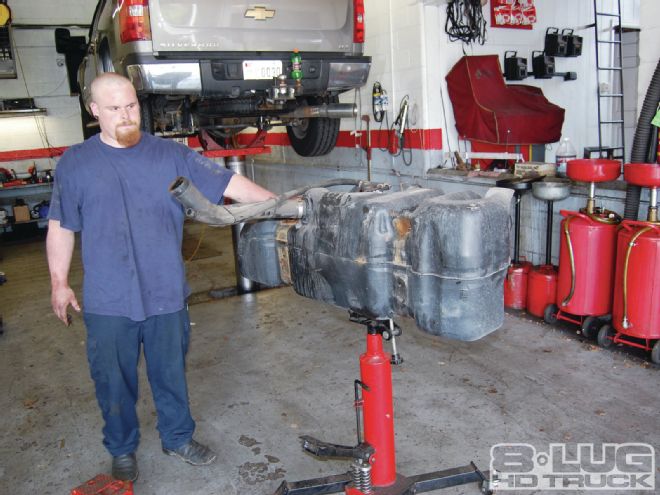
 | 10. Here’s a look at the braided hoses that are included for proper venting.
Before going any further, we had to evict the tank and compressor and relocate them to the passenger-side inside framerail. Next, all the hoses and sending unit were swapped out; Tranfer Flow provides new floats for the tank. The new included brackets were hung, the tank was raised up into the truck, and everything snugged up. It should be noted that there was no drilling required and all the factory fuel hoses mated up perfectly. The filler hoses were reconnected, and we poured in a few gallons of diesel we kept from the old tank. We cycled the ignition a few times to ensure the fuel made the trip from the new tank to the Duramax, and it fired right up. After a cursory check for leaks, we left it running and put it back up in the air to check all connections for any drips. We found none. A trip to the local filling station cost us $176. We did learn that the pump clicks off at $75, so we had to keep swiping and starting over, which is annoying. In the future, we’ll prepay at the counter. The fuel gauge worked perfectly, but we did notice the miles-to-empty display on the DIC would not display correctly, and there does not seem to be a fix for it (even with a Tech2) short of an EFI reprogram, so we’re going to look for another solution.
| 10. Here’s a look at the braided hoses that are included for proper venting.
Before going any further, we had to evict the tank and compressor and relocate them to the passenger-side inside framerail. Next, all the hoses and sending unit were swapped out; Tranfer Flow provides new floats for the tank. The new included brackets were hung, the tank was raised up into the truck, and everything snugged up. It should be noted that there was no drilling required and all the factory fuel hoses mated up perfectly. The filler hoses were reconnected, and we poured in a few gallons of diesel we kept from the old tank. We cycled the ignition a few times to ensure the fuel made the trip from the new tank to the Duramax, and it fired right up. After a cursory check for leaks, we left it running and put it back up in the air to check all connections for any drips. We found none. A trip to the local filling station cost us $176. We did learn that the pump clicks off at $75, so we had to keep swiping and starting over, which is annoying. In the future, we’ll prepay at the counter. The fuel gauge worked perfectly, but we did notice the miles-to-empty display on the DIC would not display correctly, and there does not seem to be a fix for it (even with a Tech2) short of an EFI reprogram, so we’re going to look for another solution. 